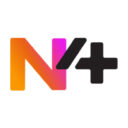Cybersecurity in 2025 is no longer just about firewalls and antivirus software. It’s about understanding how hackers operate, using AI to stay ahead, and building a security strategy that’s proactive, not reactive.
According to the mid-market report, many business leaders still see cyber as IT’s responsibility, not a shared business risk. And yet, 30% of mid-market leaders agree that cybersecurity threats are the biggest external influence on IT strategy.
What are the common ways hackers gain access?
AI-Powered Phishing
Generative AI tools scrape public data from LinkedIn, social media and company websites to craft hyper-personalised phishing emails. These messages mimic tone, formatting, and context so well that even trained professionals struggle to spot the difference. This technique is central to how to block hackers and how to prevent hacking because phishing remains the #1 entry point for breaches.
Zero-Day Exploits
Google’s Threat Intelligence Group reported 75 zero-day exploits in 2024 alone, with 44% targeting enterprise systems. AI accelerates vulnerability discovery, shrinking the time between flaw detection and exploitation. Hackers use LLMs to scan code, generate proof-of-concept exploits, and launch attacks before patches are available.
Weak Passwords & Credential Stuffing
Despite years of awareness, weak and reused passwords are still common. Hackers use automated tools to guess passwords based on leaked data, dictionary lists, and behavioural patterns. Once one account is compromised, they often try the same credentials across multiple platforms, a tactic known as credential stuffing.
Public Wi-Fi Exploits
Unsecured networks remain a favourite target. Hackers can intercept data transmitted over public Wi-Fi, capturing login credentials, emails, and sensitive files. This is especially risky for mobile users who access work systems on the go.
Malware & Polymorphic Attacks
Malware has become smarter. Some strains now change their code structure every time they execute, making them harder to detect by traditional antivirus software. These polymorphic attacks can hide in email attachments, software downloads, or even legitimate-looking websites.
How to block hackers: Practical tips you can use today
1. Use Multi-Factor Authentication (MFA)
Passwords alone are no longer enough. MFA adds an extra layer of security by requiring a second form of verification, like a code sent to your phone or a fingerprint scan.
Why it matters: Even if a hacker gets your password, they can’t access your account without the second factor. This is one of the most effective ways to stop being hacked.
2. Use strong, unique passwords
Weak or reused passwords are one of the easiest ways for hackers to gain access. Use a mix of letters, numbers, and symbols and never use the same password across multiple accounts.
Tool tip: Consider using a password manager to generate and store secure passwords. This helps secure your phone from hackers and protects all your accounts.
3. Install security software and keep it updated
Antivirus and anti-malware tools are your first line of defence. But they only work if they’re up to date. Make sure your devices, such as phones, laptops, and tablets, are protected with reputable software.
Bonus: Many modern tools use AI to detect threats in real time, helping you secure yourself from hackers even before an attack happens.
4. Educate yourself and your team
Cybersecurity isn’t just a tech issue. Regular training and awareness among employees can prevent costly mistakes.
Tip: Run phishing simulations, share security tips, and encourage a culture of caution. This is especially important for businesses looking to prevent hacking across teams.
5. Monitor for suspicious activity
Keep an eye on your accounts and devices. Unusual logins, password reset requests, or unexpected emails could be signs of a breach.
Action: Enable login alerts and review account activity regularly. This helps you stop hackers before they cause damage.
6. Limit access and permissions
Only give access to what’s necessary, whether it’s apps on your phone or users in your business systems. The more people or programs that have access, the more potential entry points for hackers.
Example: Remove unused apps, revoke unnecessary permissions, and audit user access regularly.
7. Invest in professional cybersecurity services
While basic security measures are essential, they’re no longer enough. Today’s threat landscape demands expert support, continuous monitoring, and strategic planning. Investing in a professional cybersecurity service can help you stay ahead of evolving threats, reduce risk, and respond quickly to incidents.
Pro-Tip: We offer managed security services, 24/7 monitoring, and AI-enhanced threat detection, making it easier for businesses to block hackers and prevent hacking without the complexity of managing it all in-house.
Node4’s cybersecurity offerings: ACT against cyber risk
Node4’s cybersecurity strategy is built around the ACT Framework, a three-phase approach designed to help businesses move from reactive to resilient:
- Assess:
Identify vulnerabilities, evaluate risks, and understand your current security posture.
- Consolidate:
Streamline and strengthen your security stack with integrated tools and architectures.
- Triage:
Monitor, detect, and respond to threats with expert support and real-time intelligence.
This structured model ensures that organisations not only defend against threats but also build long-term cyber resilience.
Get the full breakdown of Node4’s ACT framework with actionable guidance.

Cybersecurity in action: CloserStill Media’s success story
As CloserStill Media scaled from a small UK team to a global organisation, its cybersecurity strategy needed a serious upgrade. Without a dedicated CISO, the company partnered with Node4 to move from reactive audits to a proactive security roadmap.
Node4 delivered:
- A managed SIEM solution with 24/7 monitoring
- Improved audit log management
- Tailored user training and board-level engagement
The result? Greater clarity, confidence, and resilience across their global infrastructure.
Know your weak spots: Book a free security doctor assessment
Node4’s Security Doctor Assessment offers a fast, standards-aligned review of your infrastructure, helping you identify vulnerabilities, benchmark against best practices, and build a clear, actionable roadmap for improvement.
Cybersecurity is no longer optional
Cybersecurity must evolve from a reactive IT function to a proactive business strategy. Whether you’re trying to stop hackers, prevent hacking, or protect your phone from hackers, the key lies in layered defences, continuous education, and expert support.
Investing in professional cybersecurity services like those offered by Node4 ensures your business is equipped to detect, respond, and recover from threats with confidence. From assessing vulnerabilities to managing incidents in real time, Node4’s ACT Framework helps organisations move from uncertainty to resilience.
